Phaseolus coccineus
SCARLET RUNNER BEAN, CASE KNIFE BEAN
Family: Fabaceae
Pronounced: fa-SEE-o-lus kok-KIN-ee-us
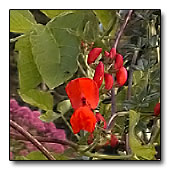
Quick Jumps
Growing Guide
Rainy Side Notes
GROWING GUIDE
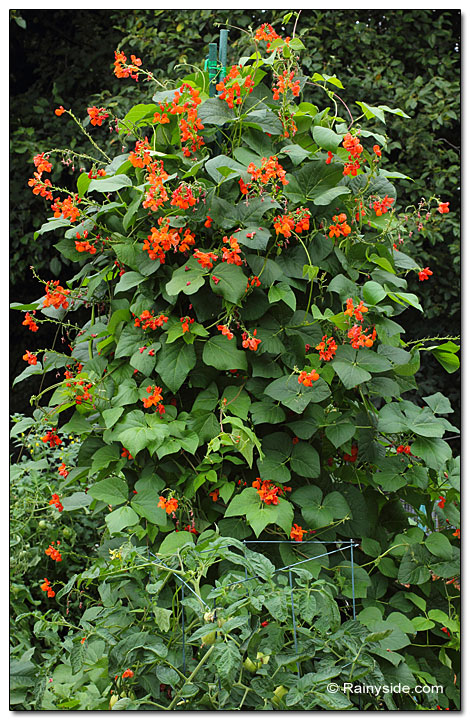
Origin:
Mexico, Guatemala.
Plant Group:
Vines.
Hardiness:
Sunset zones: All.
USDA zones: 1-11 (perennial in zone 10).
Mature size:
Height: 10-20 feet (3-6m).
Width: 2 feet (60 cm).
Flowering period:
Summer to frost.
Flowering attributes:
Clusters of scarlet colored, pea-shaped flower.
Leaf attributes:
Heart-shaped, emerald-green leaves.
Growth habit:
Twining climber.
Light:
Full sun.
Soil:
Average to rich, moist, well-drained soil.
Feeding:
Throw fertilizer in planting hole using a complete organic fertilizer. Feed again when plants are in active growth, and another time when pods start to form.
Propagation Methods:
Sow seed as soon as last frost has passed and the soil warms to 50°F (10°C), about 2 inches deep and 4 inches apart. I pre-sprout my seeds before planting outside.
Rainy Side Notes
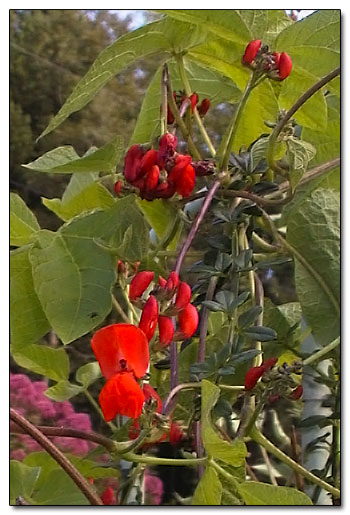
Ornamental flowers on an edible vine.
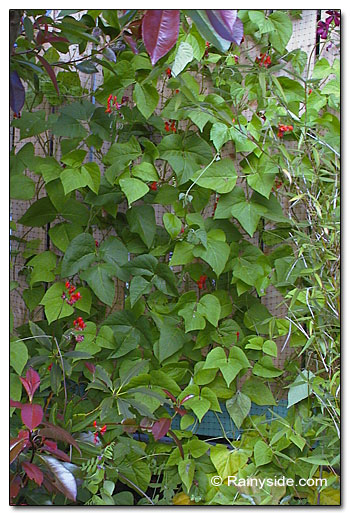
Bird netting is used to grow beans up a wooden fence.
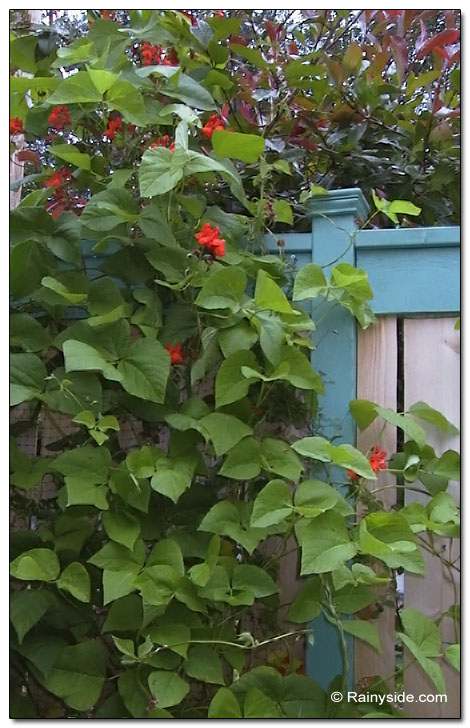
Scarlet runner bean is one of the older runner beans native to North America and cultivated for its edible and ornamental properties.
I grow it for many reasons — mainly to feed hummingbirds and myself. In addition, the plant sets nitrogen in the soil. I pick a spot along the fence line to let this grow up somewhere in the garden and vary its position from year to year.
Some Native American tribes regard the bean as a sacred plant. Many parts of the plant are edible, such as the pods (for green beans), dried beans, starchy roots, and edible flowers that are bean-like in taste. Use the dried beans as a substitute for garbanzo beans, limas or the Great Northern bean, and for refried beans. Since we cannot grow limas well enough in our cool Northwest climate, the scarlet runner is a good substitute. P. 'Scarlet Emperor' is a variety developed for eating them like other string beans. Harvest the pods when they are three or four inches long; after that they develop strings and parchment. Prepare and cook pods as you would other green beans. Harvest the beans when the pods have dried on the vine.
Because the vine is a tender perennial, it's grown as an annual in the Pacific Northwest. Provide netting or string to train the runner beans up trellises, or arbors, at least 6 feet high. The vine is very showy and used to screen porches or twining up obelisks and other supports. Dig the roots up in fall, store them the same way as dahlias, and replant the following spring. I find this method of digging them up more trouble than it's worth, since the vines are easy to start from seed each year.
Phaseolus coccineus is an excellent bee and hummingbird plant.
Photographed in author's garden.

Gardening for the Homebrewer: Grow and Process Plants for Making Beer, Wine, Gruit, Cider, Perry, and More
By co-authors Debbie Teashon (Rainy Side Gardeners) and Wendy Tweton
Copyright Notice | Home | Search | Vines

